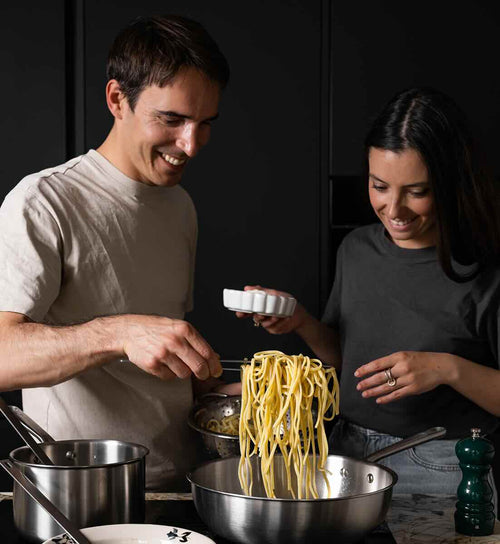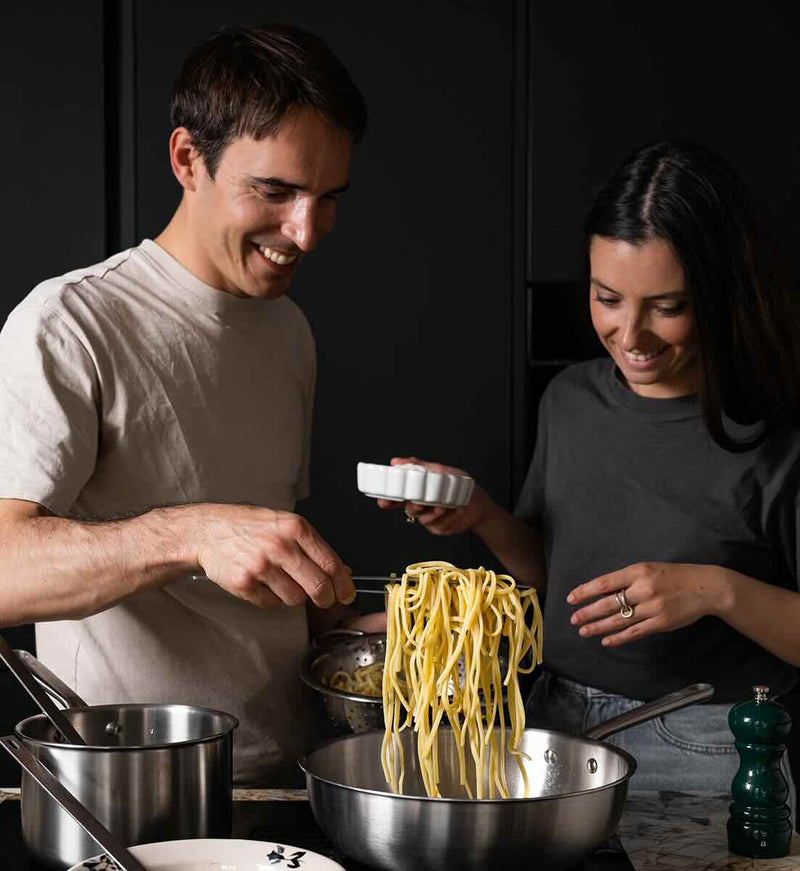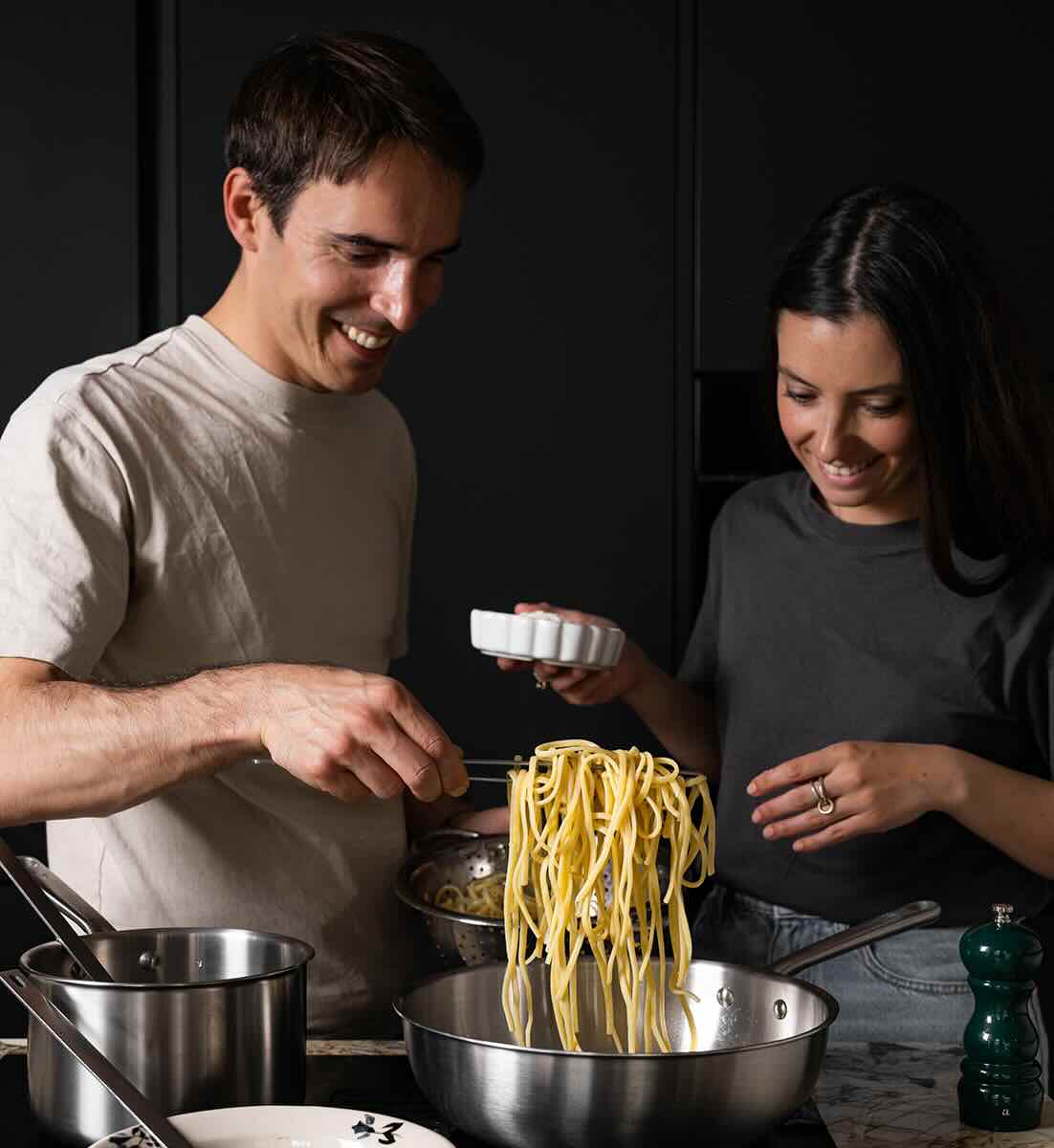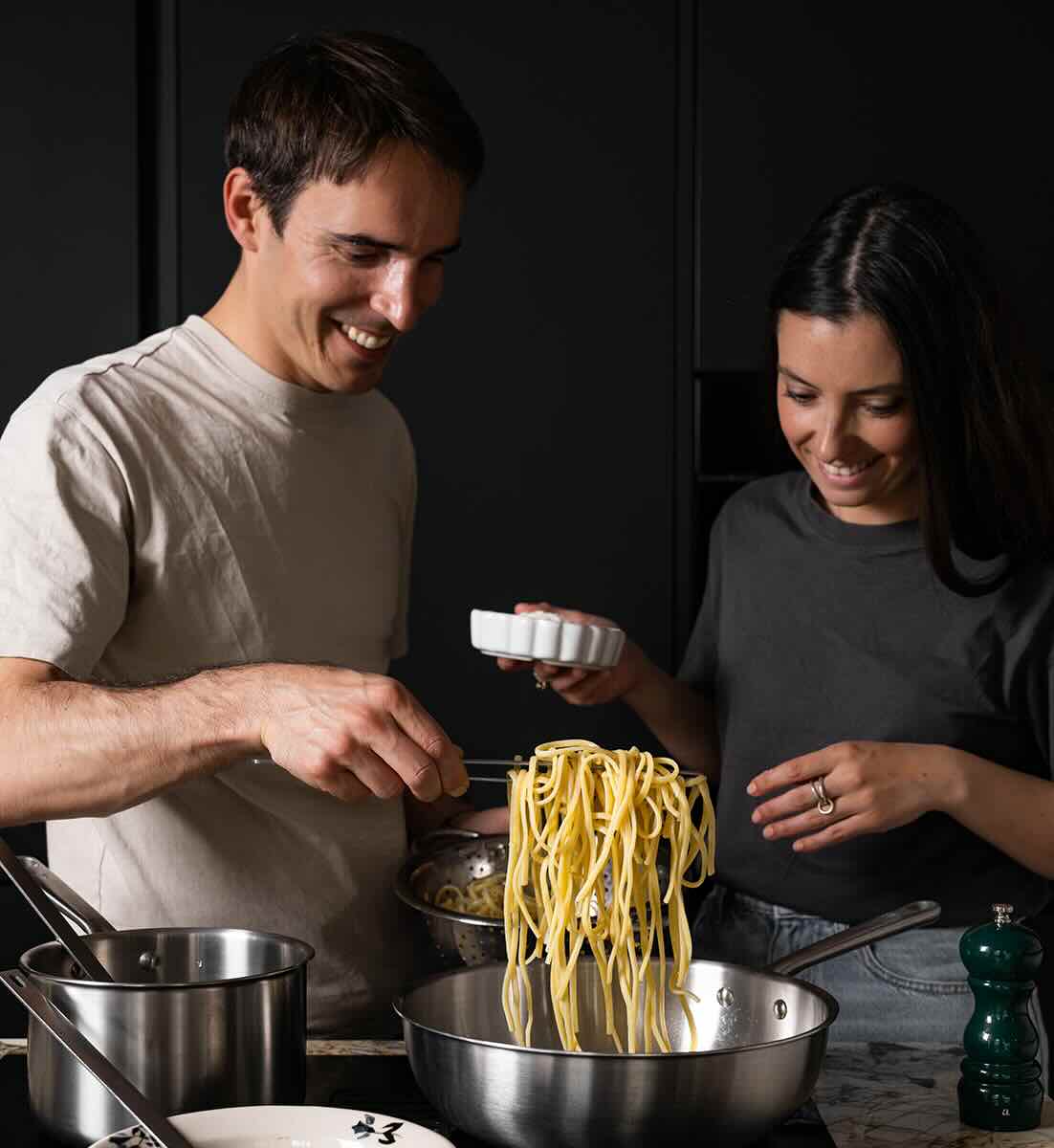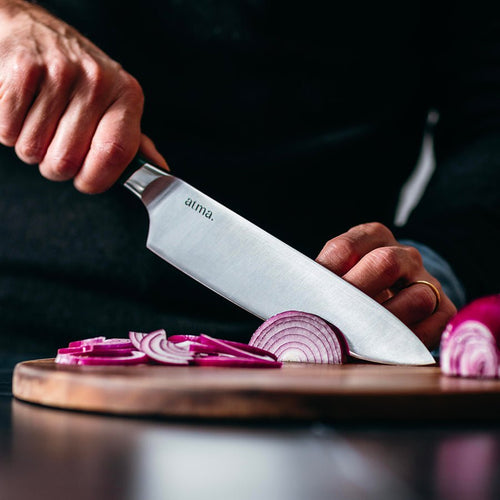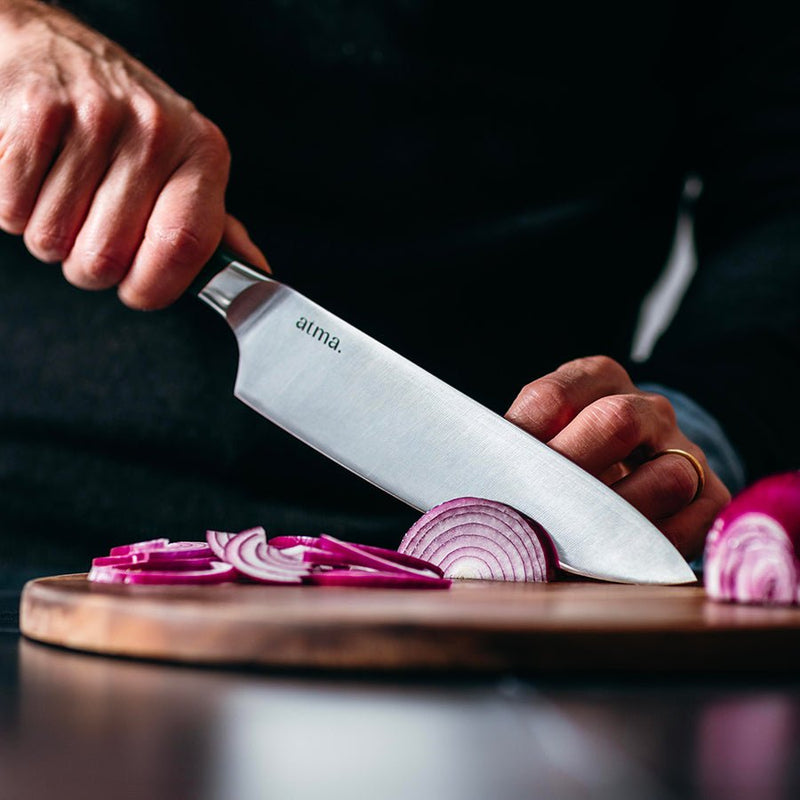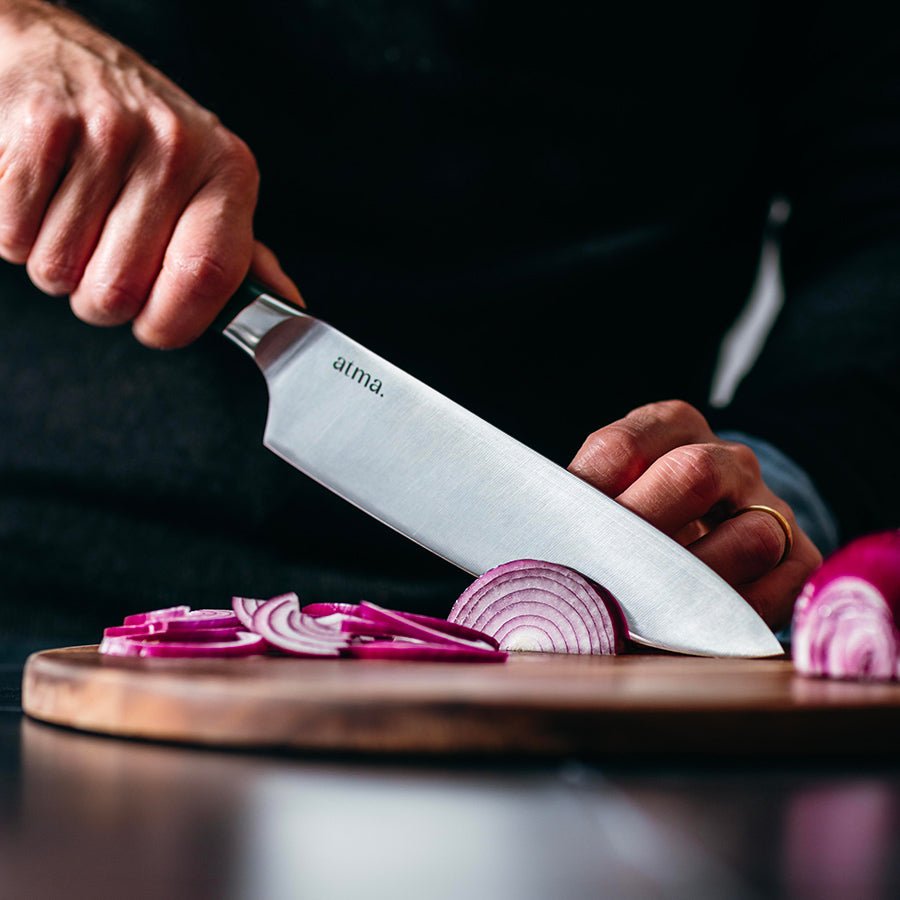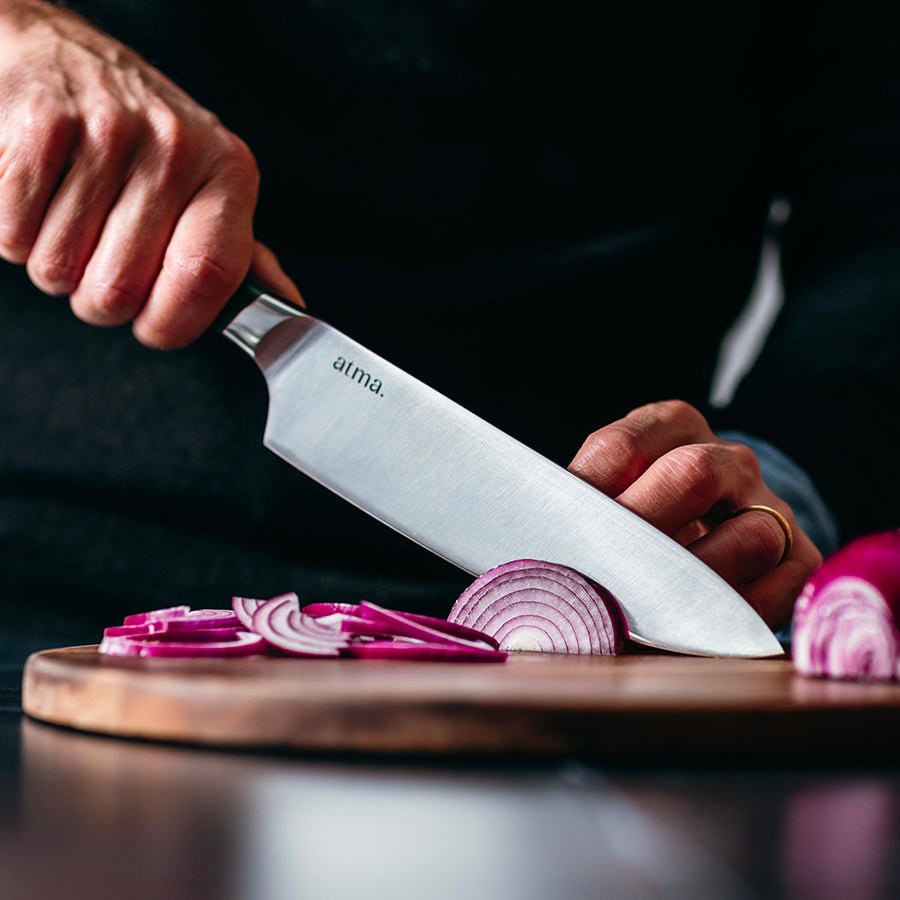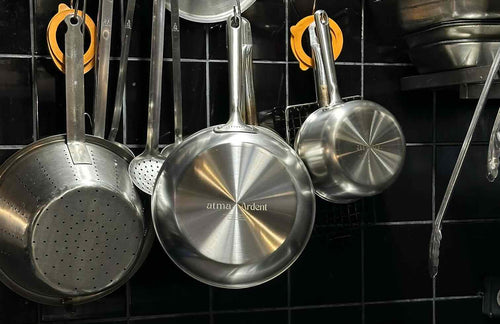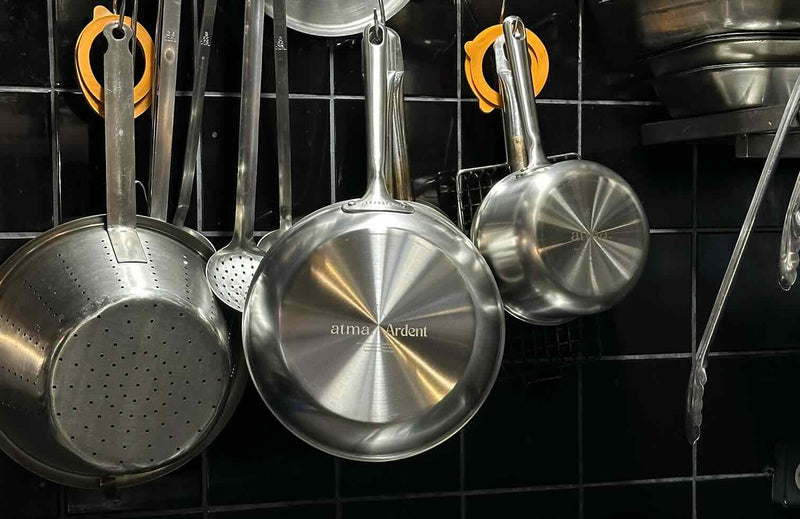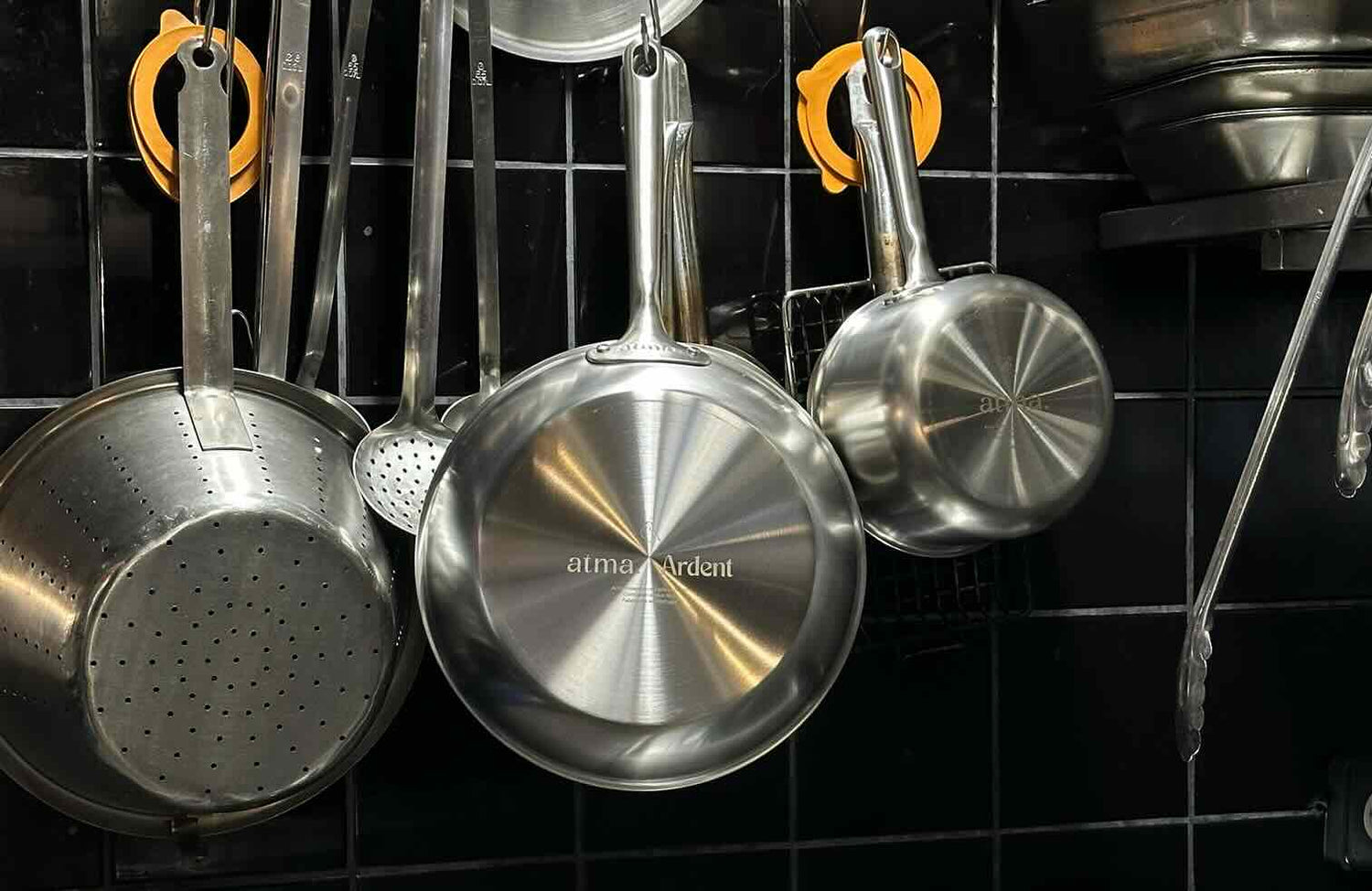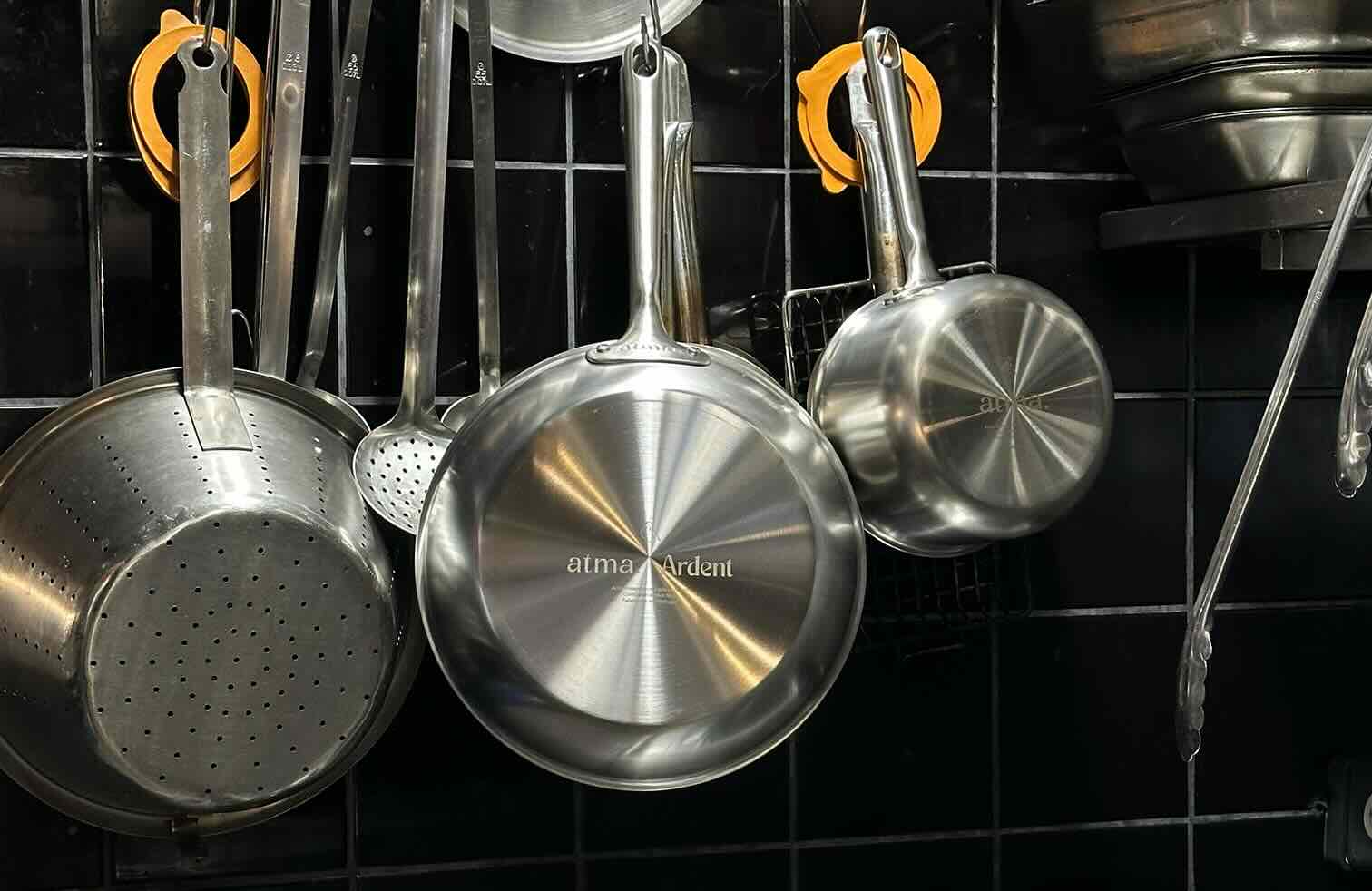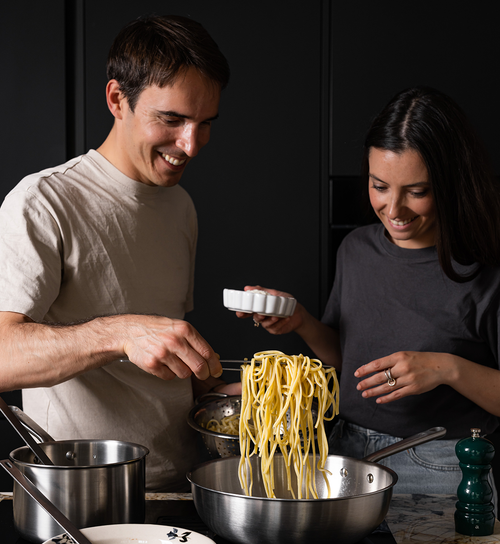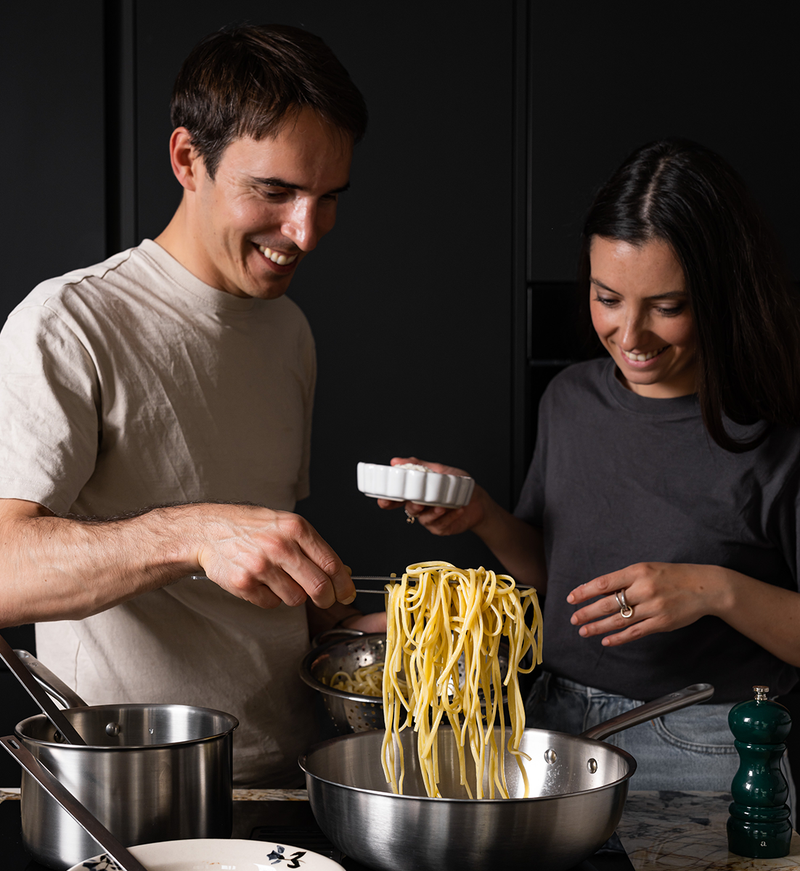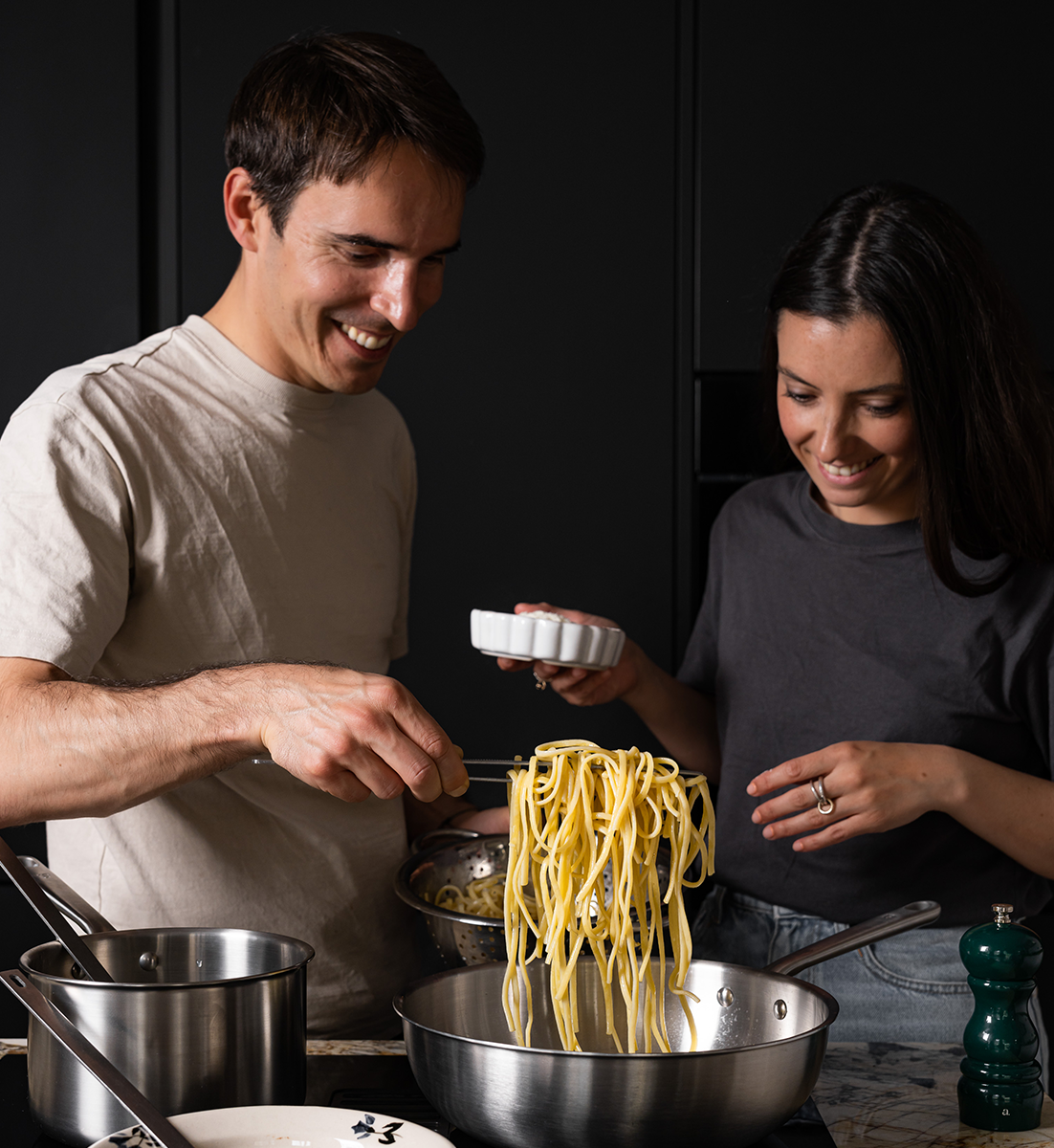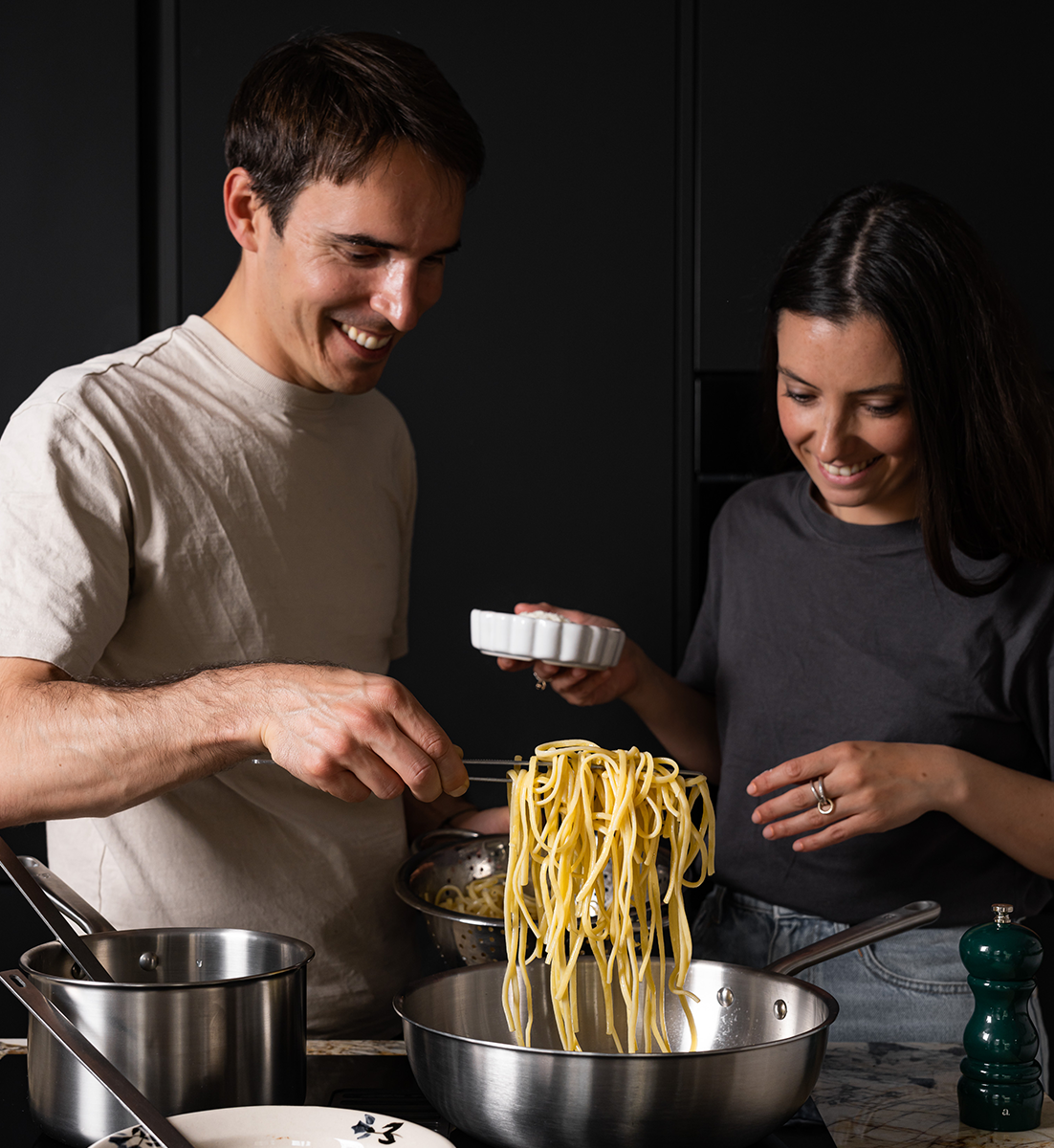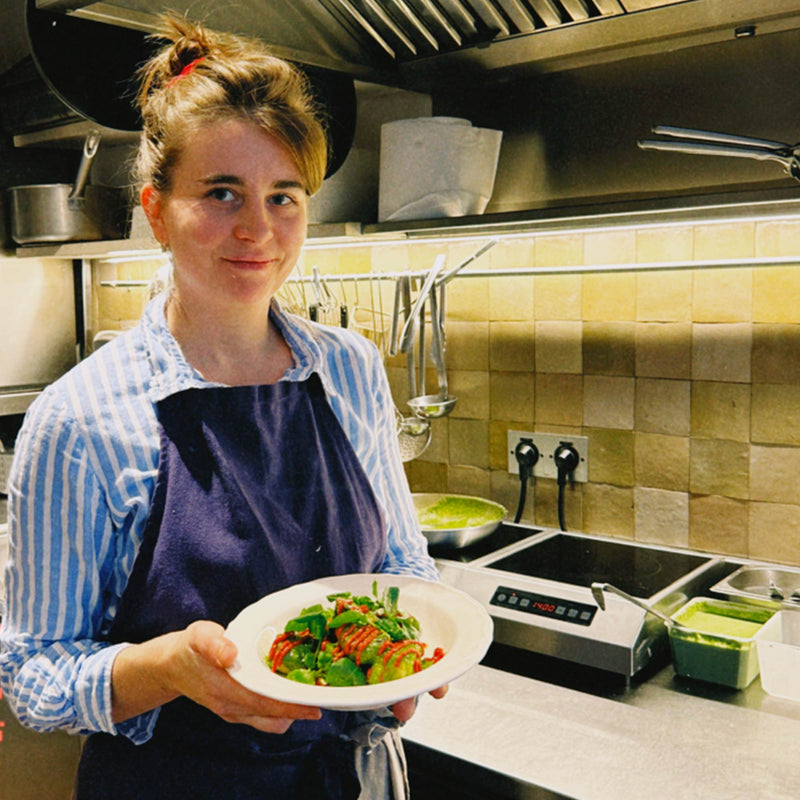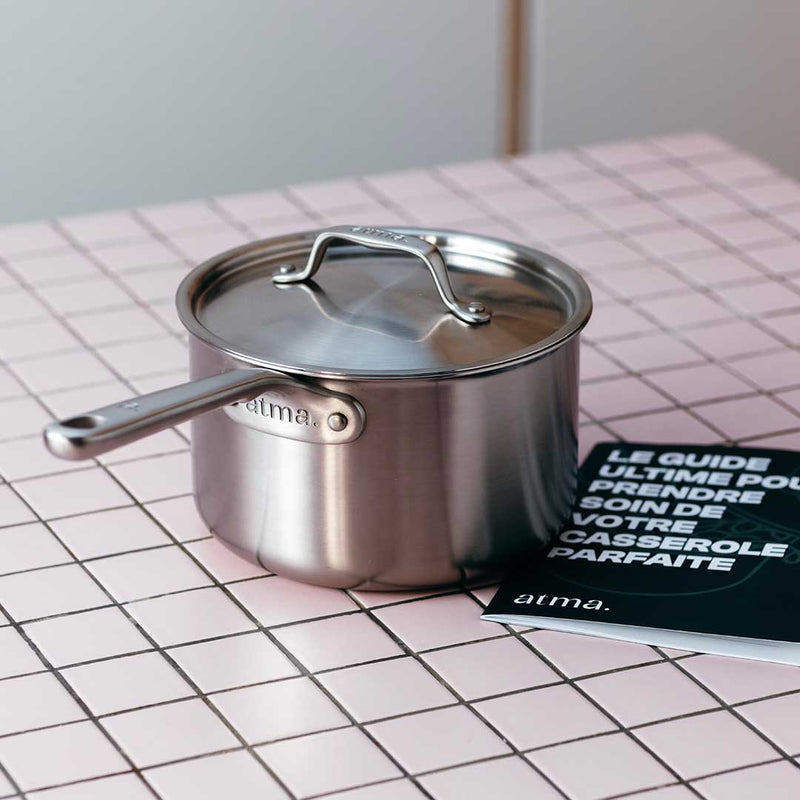You already own a stainless steel skillet or you would like to buy one, but you're still hesitant for fear that your food Are they sticking? No worries, discover our simple tips to prevent your stainless steel pan from sticking!
Why do stainless steel pans stick?
The most common cooking mistakes with stainless steel
If your food is sticking, it's often due to a few simple mistakes that can be corrected. The most common is placing the ingredients in a stainless steel pan that's not hot enough: proper preheating is essential. Conversely, heating too strongly burns the fat and causes the food to stick. It's also important to add the right amount of fat, especially for delicate dishes like eggs or fish. Finally, avoid turning your food too early: once a crust has formed (the Maillard reaction), it will naturally peel off.
How to prevent food from sticking to stainless steel pans?
- Preheat your pan:
Before you even begin cooking your food, make sure to preheat your stainless steel pan. Ideally, preheat your pan for 2 minutes over medium heat. This step is crucial. You can time yourself, especially during the first few uses, to get a feel for the desired temperature. This will allow the pan to distribute heat evenly across the entire surface and prevent food from sticking to the bottom.
Next, perform the water drop test to check if your pan is at the right temperature. To do this, pour a few drops of water into the pan: if they don't evaporate and form small balls that roll, it's ready...
We've prepareda short video to show you what It should look like this..
2. Cook over low heat to preserve flavors:
If you're used to cooking over high heat, try reducing the temperature. You don't need to cook over high heat with your stainless steel pans.
Indeed, overheating can cause your food to stick or dry out. This is the case with meat, for example. Too high a heat can cause the outside of the meat to overcook before the inside is cooked. To avoid this, place the meat in the hot pan after the water drop test to sear it initially and create an initial crust. When you're happy with the outer crust, reduce the heat to finish cooking the inside. The meat will cook slowly and evenly, and will have time to caramelize slightly on the outside.
Stainless steel is an excellent heat conductor, so it's not necessary to heat it over high heat. Especially for first-time use, it's best to maintain a moderate heat after preheating. This method allows for even cooking and preserves the flavors of your dishes. Furthermore, if you heat your stainless steel cookware too much, you risk seeing yellow or brown overheating marks appear. While they won't affect your pan's performance, they are not very aesthetically pleasing.
3. Add the right amount of fat:
Adding fat helps prevent food from sticking to your stainless steel cookware, although it isn't always necessary. For example, when cooking meat, it's not necessary to add fat. The fat in the meat is sufficient. As explained below.
Afterwards, indeed, if you cook more delicate foods like eggs or fish, then yes, you need to add fat. But rest assured, these foods can be cooked in stainless steel pans and we demonstrate this onour YouTube channel.
As for the quantity, generally, one tablespoon of oil is recommended for a medium-sized pan; adjust as needed. Make sure to choose a fat suitable for cooking, such as grapeseed oil, which has a higher smoke point than other oils. If you add too much at first, don't panic; wipe off the excess oil with a paper towel to avoid overcooking and continue cooking.
4. Be patient!
Patience is key with stainless steel pans. Give food the time it needs to cook and release from the bottom. Avoid turning them too early; wait until a crust forms before trying.
5. Choose the right pan
Finally, to prevent food from sticking, choose a quality stainless steel pan, ideally one made of multi-layer steel, such as theAtma's La Bonne Poêle 26cm. As we've seen, with the right techniques, you'll achieve beautiful, trouble-free cooking and can say goodbye to your non-stick pans. Your body will thank you!
The right Atma pan comes in several sizes, and each diameter meets your different needs.
Atma offers a range of professional-quality pans. These pans are made of 3-ply 18/10 stainless steel, a strong and durable material. They are compatible with all hobs, including induction. The handle is specially hollowed out to limit heat buildup.
Findour stainless steel pan set in our collection.
By applying these easy tips and developing good cooking habits, you can maintain the performance of your stainless steel pan and fully enjoy your dishes. Remember that each ingredient reacts differently to heat, so adapt your methods accordingly. Additionally, adjust the seasoning with salt to your taste, as this can also affect how food sticks to the pan, and even how you cook it.
Finally, two last points:
- All these recommendations apply to all your stainless steel utensils:saucepan, casserole dish,sauteuse,wok, etc.
- For those who really want to make their pan as non-stick as possible, there's the option of seasoning it. You can season your stainless steel pan, but once seasoned, you can no longer wash it in the dishwasher. We've also prepared an article explaininghow to season a pan.
























